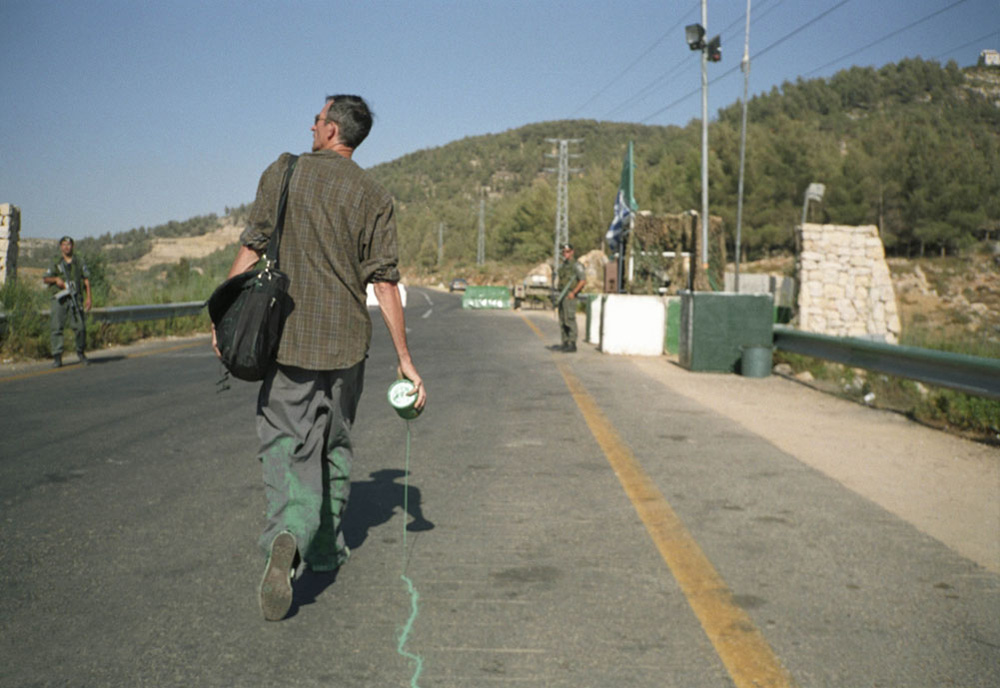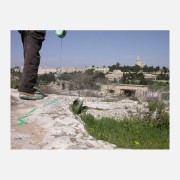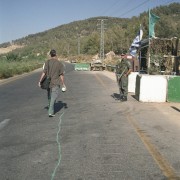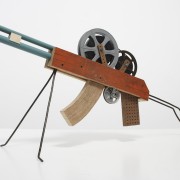Francis Alÿs - The Green Line
Using green paint, Alÿs walked along the armistice border, known as ‘The Green Line’. The border was created by Israeli general Moshe Dayan after Israel’s War of Independence, an armistice line essentially dividing Jerusalem in half: Israel got the western side, Arabs got the east. This remained the border until the Six Day War in 1967 after which Israel occupied Palestinian-inhabited territories east of the line. It gave an artist’s askance view of the Israeli-Palestinian conflict, and achieved that rare artistic feat: chastising the political status quo without becoming either cynical or simplistic.
„If you’re asking about what excites me, well, an unknown situation, one that I may have provoked but which is outside of my control, where I’m testing how I might react and how far I can go, does. performance art has that component – you come up with a script or an axiom and you enter a situation. It develops, but you don’t exactly know where it’s going. There are risk factors, issues of physical endurance too, your own and other people’s – on an emotional level this is all very interesting.“
Employing a broad range of media from painting to performance, Alÿs works examine the tension between politics and poetics, individual action and impotence. Alÿs restricted his walking to a 15-mile stretch through a divided Jerusalem, a hike that took him down streets, through yards and parks, and over rocky abandoned terrain. He takes no sides, he makes no political statements – he’s just walking, pointing out things without words.
Alÿs reconfigures time to the speed of a stroll, making reference to the figure of the flâneur, originating from the work of Charles Baudelaire and developed by Walter Benjamin.
He contrasts geological and technological time through land-based and social practice that examine individual memory and collective mythology. He also frequently engages rumor as a central theme in his practice, disseminating ephemeral, practice-based works through word-of-mouth and storytelling: “Sometimes doing something poetic can become political and sometimes doing something political can become poetic”.
In a film of the walk made with Julien Devaux, Philippe Bellaiche and Rachel Leah Jones, Alÿs seems to attract little notice. As part of the project, Alÿs also interviewed Israelis and Palestinians for their reaction to his work, selecting 11 of them to be screened alongside the main film. The interviews were meant to get Alÿs out of the comfortable, pretentious role of artist-as-social-critic, in which the artist offers every political commentary but not much more. They were also intended to be a model for what any eventual solution to the conflict would entail: dialogue.
Alÿs is one of today’s leading conceptualist artists, and while his works can sometimes be too obvious or too obtuse, many of them capture that difficult mix of nuance, wit and earnestness he strives for with obvious care.
Photo credit
1 und dann 1 und genau 2 und 3 genau






